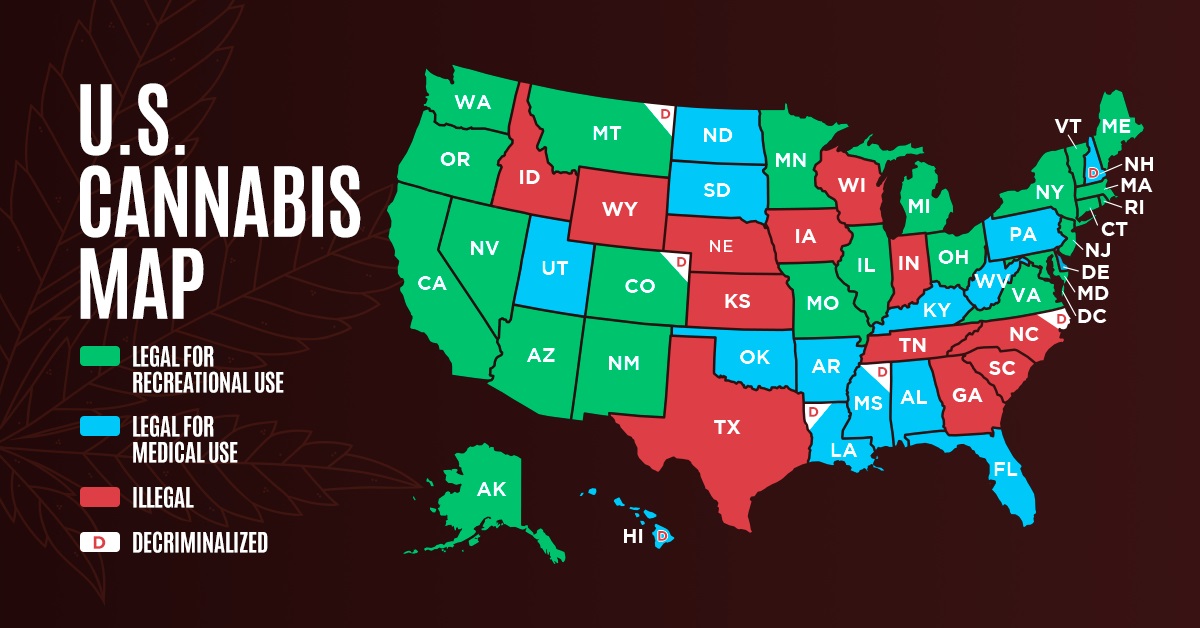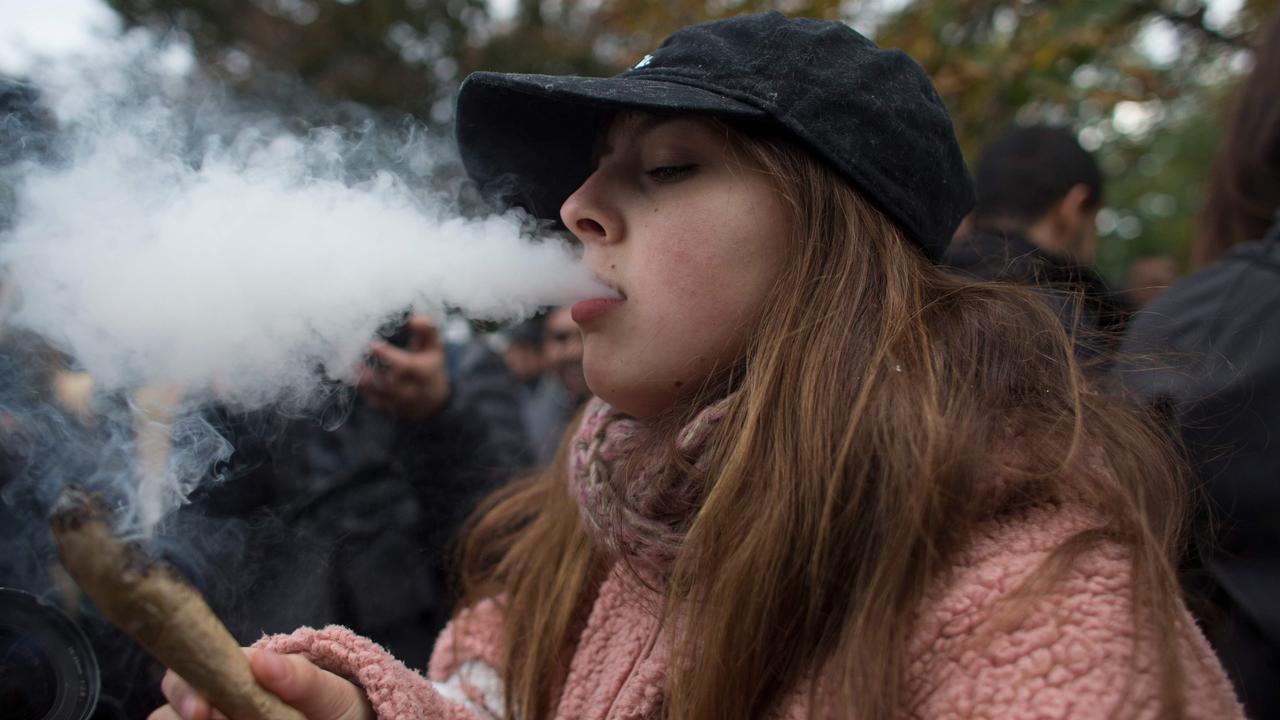Dirty habit millions admit to daily linked to 'silent' liver disease that can kill with no warning signs
By Cassidy Morrison
Daily Mail
Jul 7, 2025
Around 62 million Americans 12 and older have used marijuana in the past year and approximately 18 million people use it daily
Once believed to have minimal long-term side effects, cannabis has now been found to increase the risk of deadly liver damage.
A team from the FDA’s Center for Drug Evaluation and Research conducted a randomized double-blind clinical trial – the gold standard for scientific research – involving more than 200 people.
Researchers mainly watched for dangerous liver enzyme spikes in people who consumed cannabis.
They found eight CBD users developed spikes above the safe threshold, with seven dropping out due to liver concerns between weeks three and four. However, everyone's liver tests normalized after quitting CBD.
CBD comes from the marijuana plant, but does not contain THC, the psychoactive chemical that causes a high. The legal substance comes in gummies, tablets, and oils and is generally used to treat aches and pains, though its efficacy is still in question.
Marijuana, which induces a mind-altering state and euphoria, has long been thought of as a relatively harmless substance with fewer side effects and risks than alcohol, tobacco, and illegal drugs.
Around 62 million Americans 12 and older have used marijuana in the past year and approximately 18 million people use it daily.
Chronic cannabis use may affect memory and motivation, while acute use raises heart rate. Some studies link long-term use to heart attack and stroke risks. Rarely, heavy use causes severe, painful vomiting, which can often only be relieved by hot showers.

CBD is legal and doesn't contain any of the chemical tetrahydrocannabinol (THC), which is what makes cannabis illegal

Long-term marijuana use has come under the microscope in recent years on the heels of nationwide laws and ballot measures that legalized marijuana use in adults for medicinal and/or recreational use.
Researchers said: ‘There are knowledge gaps surrounding potential health risks associated with CBD at doses consistent with unregulated consumer products, including liver damage and male reproductive harm.’
Eight of the participants were given 2.5mg of CBD per 2.2lbs of their bodyweight twice a day. They showed higher levels than normal of liver enzymes, which help speed up chemical reactions in the body for metabolism and digestion.
High levels of liver enzymes can damage liver cells, and in the study, nearly five percent of participants met the criteria for drug-induced liver injury.
However, their enzyme levels returned to normal within about a week after stopping CBD.
Healthy people in the study were randomly assigned either CBD – 151 people – or a placebo – 50 people – for 28 days twice a day.
The study’s main goal was to see how many people had liver enzyme levels (alanine aminotransferase or aspartate aminotransferase) spike to at least three times the normal limit while taking the substance.
Liver damage accumulates often without the person knowing, though elevated liver enzymes can cause fatigue, yellowing of the skin or eyes, dark urine, and abdominal pain.
Subjects did not display symptoms.

Polling firm Gallup said the 50 percent of Americans who have tried weed marked a 2 percentage point increase from the last time they canvassed the nation at the start of 2022

United States of Weed (2025)
Seven people showed signs of possible liver damage from the treatment—two at the three-week mark and five after four weeks—leading them to stop the study early.
Healthy volunteers were screened, then stayed overnight at the clinic before starting 28 days of taking either CBD or a placebo at home.
They returned for checkups on days seven, 14, 21, and 28, with a final follow-up on day 35.
Blood tests tracked liver health and hormones throughout, including testosterone and thyroid levels, compared to the placebo group.
Two people had to drop out at week three due to enzyme levels up to five times higher than normal and high white blood cells, while five people dropped out a week later due to enzyme levels greater than five times higher than normal.
Liver enzyme levels began to climb by week three and peaked one or two days after people stopped taking CBD before eventually returning to baseline levels.
CBD did not cause any changes to testosterone level and thyroid function.
While this study only assessed short-term CBD use, the delayed onset of elevated liver enzymes—which occurred without noticeable symptoms—suggests potential risks could still exist with longer-term use, even at doses at or below 5 mg per 2.2lbs per day.
Their findings were published in the JAMA Internal Medicine.
Liver damage progresses silently, allowing harm to go undetected without regular blood test monitoring or discontinuing CBD.
In rare cases, drug-induced liver injury could lead to liver failure or require a liver transplant, but it often reverses if the cause is stopped - such as a certain medication.
There are about 14 to 19 cases per 100,000 people - or 2.7 to 3.8million.
CBD is popular, with a 2023 study showing that about a fifth of Americans are using it, often at high doses.
A survey that same year of more than 5,600 people found nearly a quarter of them consumed more than 200mg daily.
‘This clinical trial is part of the FDA efforts to understand the safety of CBD products and inform discussions about safeguards and oversight to manage and minimize risks with CBD products,’ the researchers concluded.
‘These findings may have important implications for consumers who may otherwise be unaware of potential safety risks.’
ADDENDUM
There are currently 24 states in the United States that have legalized recreational marijuana as of 2025, either by ballot measure or by legislative action. These states are:
- Alaska1: Legalized in 2014 by Ballot Measure 2 with 53% of votes. Allows possession of 1 oz usable, 6 plants (no more than 3 mature), and 1 oz hash/concentrates.
- Arizona2: Legalized in 2020 by Smart and Safe Arizona Act (Prop 207) with 59.95% of votes. Allows possession of 1 oz usable, 6 plants, and 5 g hash/concentrates.
- California3: Legalized in 2016 by Proposition 64 with 57% of votes. Allows possession of 1 oz usable, 6 plants, 8 g hash/concentrates.
- Colorado: Legalized in 2012 by Amendment 64 with 55% of votes. Allows possession of 1 oz usable, 6 plants (no more than 3 mature), and 1 oz hash/concentrates.
- Connecticut: Legalized in 2021 by SB 1201. Allows possession of 1.5 oz usable, 6 plants (no more than 3 mature beginning July 2023), up to 7.5 g concentrates (up to 750 mg of THC), up to 25 g concentrates (up to 2,500 mg of THC) in a locked container.
- Delaware: Legalized in 2023 by House Bill 1 and House Bill 2. Allows possession of 1 oz usable, 12 grams or less of concentrated cannabis, or cannabis products.
- District of Columbia: Legalized in 2014 by Initiative 71 with 65% of votes. Allows possession of 2 oz usable, 6 plants (no more than 3 mature).
- Illinois: Legalized in 2019 by House Bill 1438. Allows possession of 1 oz usable, 5 g hash/concentrates.
- Maine: Legalized in 2016 by Question 1 with 50% of votes. Allows possession of 2.5 oz usable, up to 15 plants (no more than 3 mature), 5 g hash/concentrates.
- Maryland: Legalized in 2022 by Maryland Question 4 (Marijuana Legalization Amendment) with 66.88% of votes. Allows possession of 1.5 oz usable, up to 2 plants for personal use, 12 g of cannabis concentrates.
- Massachusetts: Legalized in 2016 by Question 4 with 54% of votes. Allows possession of 1 oz usable, 6 plants, 5 g concentrates.
- Michigan: Legalized in 2018 by Proposal 1 with 56% of votes. Allows possession of 2.5 oz usable, 12 plants, 15 g concentrates.
- Minnesota: Legalized in 2023 by HF100. Allows possession of 2 oz usable in public, 2 pounds usable at home, 8 plants (no more than 4 mature), 800 mg of THC in edibles, 8 g of concentrate.
- Missouri: Legalized in 2022 by Amendment 3. Allows possession of up to 3 oz usable, up to 6 flowering plants, 6 immature plants, and 6 plants under 14 inches for personal use.
- Montana: Legalized in 2020 by Initiative I-190 (56.89%) and CI-118 (57.82%). Allows possession of 1 oz usable, 4 mature plants, 8 g hash/concentrates.
- Nevada: Legalized in 2016 by Question 2 with 54% of votes. Allows possession of 1 oz usable, 6 plants, 3.5 g hash/concentrates.
- New Jersey: Legalized in 2020 by New Jersey Marijuana Legalization Amendment with 66.88% of votes. Allows possession of 1 oz usable.
- New Mexico: Legalized in 2021 by House Bill 2. Allows possession of 2 oz usable, 6 plants (no more than 12 per household), 16 g concentrated marijuana, 800 milligrams of edible cannabis.
- New York: Legalized in 2021 by Senate Bill S854A. Allows possession of 3 oz usable, 12 plants, 24 g concentrates.
- Oregon: Legalized in 2014 by Measure 91 with 56% of votes. Allows possession of 1 oz usable in public, 8 oz homegrown usable at home, 4 plants, 16 oz solid marijuana-infused, 72 oz liquid infused, and 1 oz extract at home of hash/concentrates.
- Ohio: Recreational marijuana was legalized in Ohio by a ballot measure that passed on November 8, 2023, with 55 percent of the vote1. The measure, known as Issue 2, allows adults 21 and over to possess up to 2.5 ounces of marijuana and grow up to six plants at home.
- Rhode Island: Legalized in 2022 by Rhode Island Cannabis Act. Allows possession of 1 oz usable in public, 10 oz usable at home, 3 mature plants and 3 immature plants, 5 g concentrate.
- Vermont: Legalized in 2018 by Legislative Bill H.511. Allows possession of 1 oz usable, 6 plants (no more than 2 mature), 5 g hash.
- Virginia: Legalized in 2021 by Senate Bill 1406 and House Bill 2312. Allows possession of 1 oz usable, 4 plants.
- Washington: Legalized in 2012 by Initiative 502 with 56% of votes. Allows possession of 1 oz usable, 16 oz solid marijuana-infused, 72 oz liquid infused, and 7 g of concentrates.

No comments:
Post a Comment